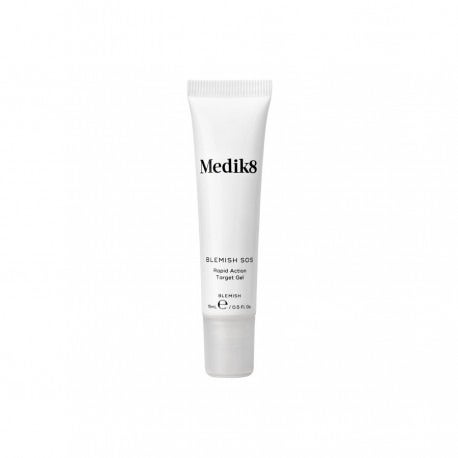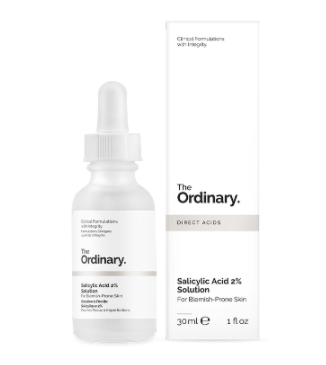How Can I Get Rid Of My Under-The-Skin Spots?
illustrated by Anna Sudit.
Dear Daniela,
What on earth can I do about those pesky under-the-skin spots? I get the odd ‘proper’ breakout, and I can control that, but I also get handfuls of red, angry spots that never really come to the surface. They can be really painful and while they don’t have white bits, they’re so oily and shiny I can’t really cover them with makeup. Can I prevent them? How can I get rid of them?
Please help!
Lucy, 25
I have a theory that there is in fact a sixth sense. No, I’m not talking about Bruce Willis (for once); I’m talking about the intuition that we all seem to have with our skin. Sometimes, days before it visibly rears its head, you can just feel a spot coming on. There’s a throb, a tingle, an itch and then, lo and behold, there a spot will appear. While no one welcomes the arrival of a zit, a spot that actually comes through with a whitehead would be my preference over one of those unpleasant under-the-skin numbers you’re talking about. I know what to do with a whitehead! I nuke it by day with Medik8 Beta Gel, and with Malin + Goetz Sulfur Paste by night. But without that ‘head’ to treat, under-the-skin spots can be stubborn little so-and-sos.
AdvertisementADVERTISEMENT
"The proper name for an under-the-skin spot would be a papule or a cyst, or a nodule, depending on how it looks," explains clinical facialist Kate Kerr. "A papule is a red bump, and a cyst or a nodule is one of those very sore, shiny ones that lingers for quite some time." (FYI, what you and I consider a whitehead is actually called a pustule. The more you know!) "When you have an overproduction of sebum, the combination of all that oil and dead skin not properly shedding starts to clog the pore, and then acne bacteria invades that pore, and inflammation sets in. With a pustule, all of that rises to the surface, but with a papule or a cyst, the inflammation spreads deeper and wider into the skin, rather than upwards – hence them being so sore!" adds Kerr.
This gave me some pause. I’ve always thought of acne-causing bacteria as the bad guy, the guy behind the curtain, the mastermind of all spot woes – but what Kate is saying is that the overproduction of oil and poor cell turnover were causing a problem before the bacteria made its move. "My 4-year-old daughter has acne bacteria on her skin," explains Kerr. "That doesn’t mean she has spots though – we all have that bacteria. When you’re looking at papules and cysts, it’s a four-pronged approach. You need to look at oil production, inflammation, cell turnover, and yes, the bacteria," she reasons. In layman’s terms? It’s about prevention rather than a cure. While reaching for over-the-counter spot treatments might ease your immediate anxiety, the penetration of those topical products just won’t be deep enough to really make a difference. "There’s no open pore," Kerr gently reminds me.
AdvertisementADVERTISEMENT
To tackle these blighters once and for all, Kate’s advice is to look at your regime, rather than applying some sort of miracle ointment/lotion to the spot (though I’ve noticed that twice-daily applications of La Roche-Posay Effaclar Duo and salicylic acid do seem to stop them getting too angry). ‘Twice-daily cleansing with something that has salicylic acid, plus gently exfoliating every day is a good start. Skip the balm or oil cleansers, go for gel, and make sure to scrupulously remove your makeup before exercising and shower immediately and thoroughly after finishing. This will help stop oil and bacteria clogging up in your pores," adds Kerr. Exfoliating will help with the cell turnover part, while cleansing with salicylic acid will help balance the bacteria and calm inflammation – Kerr recommends ZO Skin Health Offects Exfoliating Cleanser and Polish here. You could also look into getting something like the Neutrogena Visibly Clear Light Therapy Acne Mask, which uses bacteria-killing blue light and inflammation-calming red light, and has the added benefit of making you look like Optimus Prime for 10 minutes a day.
I’m sorry there’s no magic wand I can wave, Lucy, to rid you of these overnight (and to be honest, if there was, I’d patent it). As Kerr says, "a spot is the symptom of a condition, not the condition itself." Make the changes in your regime as necessary, and remember that antibiotics or Roaccutane alone are not the answer.
AdvertisementADVERTISEMENT
Good luck!
Daniela
Got a question for our resident beauty columnist Daniela Morosini? No problem, qualm or dilemma is too big, small or niche. Email deardaniela@vice.com, including your name and age for a chance to have your question answered. All letters to 'Dear Daniela' become the property of Refinery29 and will be edited for length, clarity, and grammatical correctness.
AdvertisementADVERTISEMENT










